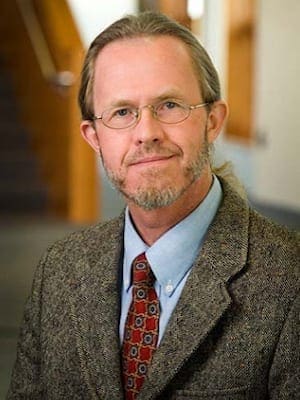Millions of adults who long ago passed the sixth grade nonetheless will go back to elementary school on March 3. That is just one day past Dr. Seuss’ birthday, and it marks the sixth annual Read Across America. RAA Day is the National Education Association’s celebration both of the good doctor and the literacy his books have fostered in so many of us.
I was among the millions of readers back in school on a recent RAA Day.
Ten of us from Central Baptist Theological Seminary volunteered at Lindbergh Elementary School in Kansas City, Kan. Lindbergh serves many urban children who have no one at home who reads to them. So we went to school to read.
On reading day, I am assigned to Ms. Smith’s kindergarten class. Arriving shortly before 10 a.m., I buzz for entry at the locked front doors, then sign in as a visitor at the principal’s office inside and down the dimly lit hallway.
Ms. Hines, Lindbergh’s principal, escorts me through a gymnasium where she once had been a physical education teacher. Ten years later, only one of two dozen former teaching colleagues remains in the school where Principal Hines now serves as recently appointed chief administrator.
Turnover is high. “But so are the rewards,” she says, “if you can look past the hardship to see the kids.” She says something to that effect, and I am impressed already with the dedication of this educator and those who work with her in a hard place.
We go down another classroom hallway, then outside and across the playground to one of several modular units in which Ms. Smith’s kindergartners await a reading. Unlocking the door, the principal invites me to step inside a small, bright and neatly kept classroom. Approximately 18 bright little faces turn to see who has entered their learning space.
Ms. Hines greets the children and their rather weary looking teacher. She introduces me to them as “Dr. Rosell, who has come to read to the class.”
One child raises her hand excitedly. “I went to see a doctor once!” The principal explains that probably it was a medical doctor this pupil had seen, while I am a teacher-doctor.
“Dr. Rosell teaches grown-ups who are going to be ministers and work in churches. How many of you go to some church?” Almost everybody raises a hand. “Well, you probably have ministers at your churches, and that’s the sort of thing Dr. Rosell does. He’s a teacher, like Ms. Smith and I are teachers, too.”
Ms. Hines leaves for the main building while the rest of us move to the reading rug in one corner of the modular classroom. Each child has his or her designated place to sit, and a few actually sit there and stay.
One little girl lays her head down immediately and tries to sleep. She looks to be either ill or very sleep-deprived. Ms. Smith is gentle with the child, responding to her immediate need in a manner that communicates care and understanding. Obviously, this has happened here before.
Most of the children are eager to crowd up around my tiny chair at the edge of the rug where the viewing is better than from designated places. These are beautiful children—black, brown, white. There are more boys than girls. I am charmed by their eagerness and attention.
“I saw you on TV!” says one little boy; two of his classmates agree that they too had seen me on television. Not having been on television very much during my lifetime, and not at all during theirs, I respond saying that I must indeed look like someone they have seen on television. I wonder which of the Sesame Street characters (or maybe the Simpsons?) I resemble.
Another little boy calls out, “And I’ve read your books!”
Ms. Smith and I laugh together. “I don’t think so,” I say, “but I hope someday you will want to read what I write!” I am also hoping someday to write something that some of them will want to read. Most academic and sermonic materials reach a very small reading public.
Picking up one of the three children’s books I had been given to read aloud, I note that it is about counting spots on creatures. “Creatures are animals,” I explain. “And I like this book about animals especially because I grew up on a farm with lots of different kinds of animals.”
Several children here have been to visit a farm, and they tell me about the different animals seen there. I tell them that my farm is far away in Minnesota, and my mama and daddy still live there.
“You have a daddy?” One of the little boys asks this, clearly incredulous. I had learned from Ms. Hines that the majority of her school’s pupils do not have a father, or at least not one they know or with whom they live.
Sheepishly, almost, I say that yes, I do have a daddy.
“Is your daddy died?” asks the boy, still not quite believing it could be otherwise.
“No, my daddy and mama are both alive and living on their farm. And I’m a daddy, too.” I show the children a photo of my own four children and their mama, my spouse.
“You have pretty children!” one girl exclaims.
“Thanks. I really do,” I say. “Your mothers—and fathers—really do, too,” I think. Beautiful children. Do their daddies know?
Taking up the book again, I begin to read aloud to other daddies’ children. “Spotted creatures, great and small …”
Tarris Rosell is associate professor of pastoral care and practice of ministry at Central Baptist Theological Seminary.

